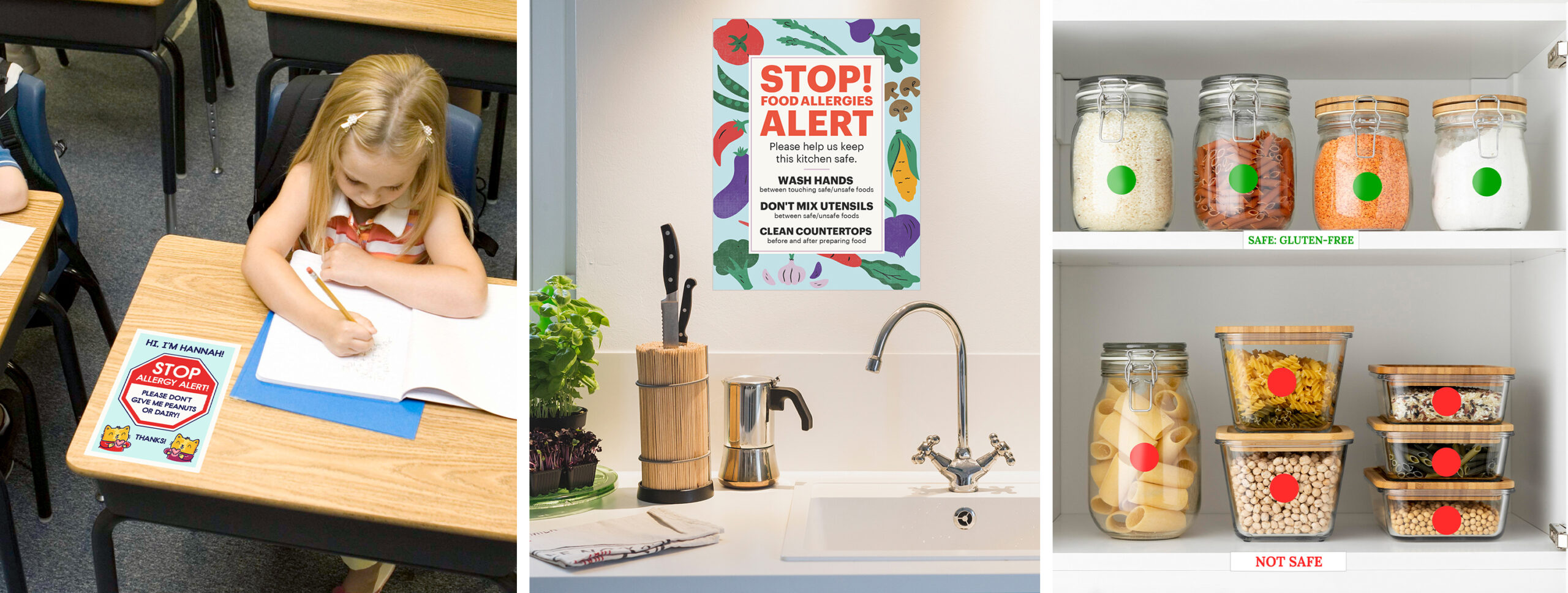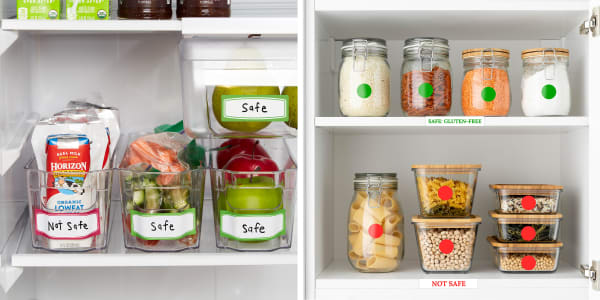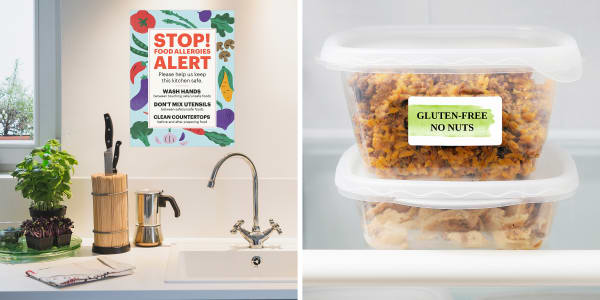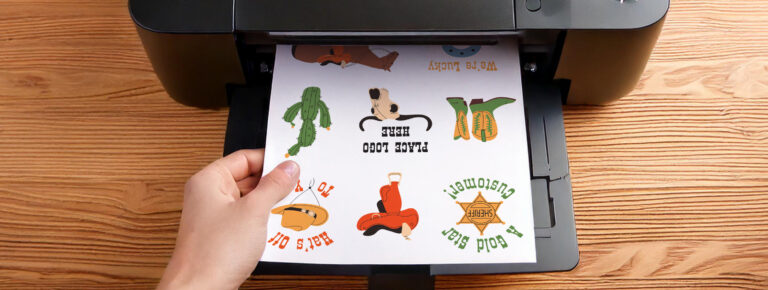
5 Allergy Safety Tips to Avoid Food Mix-Ups
Help your family avoid food mix-ups at home, school, and work
Allergy safety is not just about avoiding foods that don’t agree with you. Some foods trigger an immune system response with unpleasant, physically draining, or even dangerous side effects. Indeed, symptoms of food allergies can range from digestive problems and hives to swollen airways and anaphylaxis, which is life-threatening.
As a result, avoiding food allergies or helping your family to do so is a big deal. Not only do you have to avoid food allergens at home, but also at school and/or work.
We’ve rounded up five of our best allergy safety tips for avoiding food mix-ups with a little extra organization.
More articles you might like:
- 8 Emergency Binder Ideas to Help Keep Your Family Safe
- Back to School Kids Labels You Can Actually Clean
- 7 Pantry Organization Ideas for Your Dream Kitchen
Why is communicating allergy safety important?
The Food and Allergy Research & Education (FARE) estimates that 5.6 million kids under 18 in the U.S. have food allergies. Indeed, 40 percent of those kids are also allergic to multiple foods. Additionally, the number of kids with food allergies has tripled over the last 20 to 30 years. Yet the number continues to grow.
Relying on a caregiver’s memory, or the ability of your kids to communicate about allergies leaves too much to chance. Luckily, you can help identify allergy-safe food for your kids and their caregivers with safety labels.
Allergy safety labels also help family, friends, and caregivers quickly access emergency information for dealing with allergic reactions.

1) Use obvious “safe/not safe” labels for food
“Safe/not safe” labels for allergy safety need to be clear, easy to identify at a glance, and difficult to misinterpret. Green for safe and red for not-safe foods are great choices because they create a powerful visual cue.
In fact, green and red are generally understood as “go” and “stop” around the world due to traffic signals. So if you want colors that are easy for most people to instantly identify and understand, you really can’t beat this classic combo.
The words “safe” and “not safe” are also helpful, especially for friends and family with color vision deficiency (CVD).
2) Organize your pantry for allergy safety
In addition to using safe/not safe labels on food, it’s a good idea to separate safe/not safe food in your pantry. Whether you can dedicate a whole cabinet to each or just different shelves, labeling and consistency are key.
Firstly, you can label individual shelves or cabinets for allergy safety. Use one color-coding system for both individual foods and pantry sections. Ideally, green for safe, red for not safe.
Secondly, keep shelf and cabinet use consistent. This is important because family members might get used to where certain foods are located. If they’re suddenly moved around someone could grab food with an allergen by accident.
Pro Tip: 1/2″ x 1-3/4″ removable labels are a good fit for most shelves. For wire shelves or basket storage try printable tags instead of labels.

3) Educate your household about cross-contact
Cross-contact is when safe and not-safe foods come into contact with each other thereby making none of the food safe to eat. If you keep foods with allergens (not safe) in your house preventing cross-contact is a vital part of allergy safety.
There are three important rules to follow in order to protect members of your household with food allergies from cross-contact. First, everyone must wash their hands between touching safe and not-safe foods.
Second, utensils cannot be shared between safe and not safe foods. For example, using one serving spoon for both safe and not-safe dishes during a meal. Third, countertops must be cleaned before and after preparing food.
Educating your household about allergy safety and cross-contact includes guests! It’s a good idea to post an allergy safety poster in the kitchen and eating areas as a reminder to talk about allergy safety with visiting friends and family.
You might also consider keeping emergency allergy safety information posted on your fridge. Include directions for what to do in case of an allergic reaction, important phone numbers, and anything else that may help during an emergency.
4) Use allergy safety labels for packed lunches
Practicing allergy safety at home is one thing because it’s easier to control your environment. It can get more difficult when you have a kid with food allergies in school. Or, navigating office life with food allergies.
First things first, make sure you’re labeling lunches with allergy alert labels. You can use the same labels you use for labeling food at home. Simply add your family member’s name and food allergy requirement (gluten-free, no peanuts, etc.).
Dissolvable labels are ideal for reusable food containers. Try one of our many free design templates to help you create personalized labels for packed lunches.

5) Create allergy alert labels for school/work desks
In addition to labeling packed lunches, people with food allergies also have to navigate sharing food in public spaces. This can be difficult with classroom volunteers donating snacks or even well-meaning coworkers trying to treat the team.
Make it super easy and obvious for anyone passing out snacks in the classroom or at the office. Use removable adhesive signs that don’t damage surfaces to create big, bold, easy-to-read allergy safety labels for school and work desks.
Practice allergy safety at home, school, and work to avoid mix-ups
Avoiding food allergies and helping your family to do so is important, and can be a lot of work. Start with practicing good allergy safety at home with “safe/not safe” food labels and designated pantry storage for safe and not-safe foods.
If you have multiple people with food allergies in your household help them stay safe by avoiding cross-contact. Make sure you have resources to help visitors practice allergy safety too.
Finally, be proactive with food outside of your home. Label school and work lunches with allergy alert labels. Make it easy for teachers, classroom volunteers, and coworkers to practice allergy safety with bold labels for school and work desks.
These extra steps can help you reduce food mix-ups and keep your family safe. What are your favorite allergy safety tips? Join conversation on Facebook, TikTok, or Instagram.



